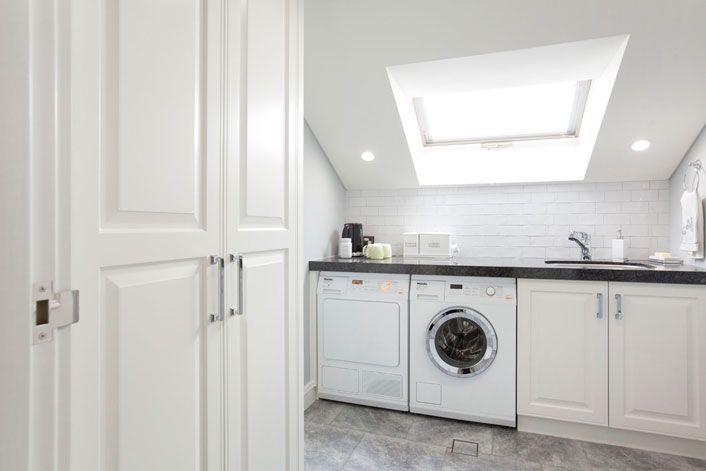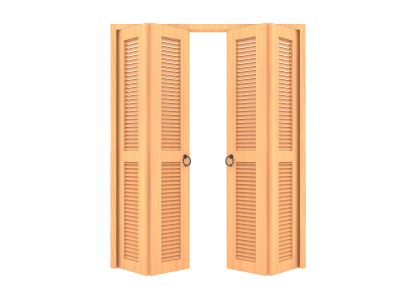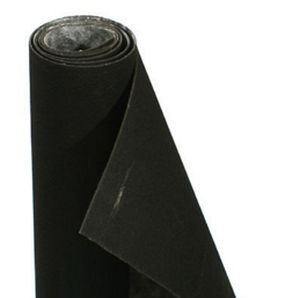No products in the cart.
Making a Laundry Room Quiet!

31
May
Although laundry rooms may not necessarily be too loud, the constant noise that they make combined with the consistent noise pattern is something that can get pretty annoying. When the dryer kicks on or the washer buzzes due to a finished load, it can be irritating if it disrupts you in your living room or family room. Often times the spin cycle is the worst, at least on my machine, because it almost makes the whole machine shake and I can hear it while I’m watching TV.
How to Soundproof a Laundry Room
We’ll break down the laundry room soundproofing options into soundproofing the doors and the walls, depending on how your laundry room is set up.
If your laundry room has a door, it’s most often a louvered door (it has slats), and it’s also very likely a bifold door, and neither of these door types block sound very well. If this is the case, the doors are likely where the sound is leaking from, and you’ll want to soundproof them as best as you can.
Your laundry room walls may be built the same as the rest of the demising walls in your home, but there might not be any rooms as loud as this on in your home. If your laundry room shares a wall with your bedroom or even your home office, it may be necessary to soundproof the laundry room walls.
How to Soundproof Laundry Room Doors

If you have a laundry room with doors, chances are this is what they look like. And if they’re not bi-fold doors, they probably have the slats. These doors are pretty awful in terms of their sound blocking abilities, so it may be a good idea to soundproof the laundry room door if this is what yours looks like.
Is most of your laundry room noise transferring through the door, or through the walls? If its the door, then you have plenty of options to address the noise issue. As we’ve discussed in the top ways to Soundproof a Door, check to see if their is sound leaking underneath the door. If you can see light under the threshold, or if you can easily slip a piece of paper into the gap, then the sound is passing too easily. Consider using a soundproofing door cover, such as the AcoustiDoor, to add mass to the door and seal the edges to prevent “flanking”.
If you own the home, then you can also consider upgrading to a solid-core door and adding a door seal and sweep. This will provide an ideal soundproofing option, although at a somewhat higher price point.
Soundproofing Laundry Room Walls
While there are various approaches that you can do to try and make a quieter room, one is to add sound proofing material to the walls. Generally, the walls of laundry rooms aren’t designed specifically for the purpose of being soundproof, so adding a sound proof material either to the interior lining of the wall or on the outside of the wall would definitely dampen the sound.
You may want to check if there is insulation in your laundry room walls. To do this, drill a thin hole in the wall and see if there is any fiberglass batting. Often times this is not the case if the laundry room is an interior wall, since batting is generally used for thermal insulation (R-value ratings). If there is no insulation in the wall cavity, consider hiring an insulation contractor to “blow in” insulation to add STC value to the wall.

Although walls should be soundproofed during construction, since soundproofing material should either be located in the wall cavity or on the studs, soundproofing materials such as Wall Blokker can be applied over existing drywall. Using Wall Blokker with an additional layer of drywall to soundproof your laundry room wall can help to reduce sound transmission by about 3 decibels, which sounds like a 50% sound reduction.
*Always ensure that the laundry machines are not touching the wall. Even hoses and exhausts that are resting against the wall will transfer the vibration energy from the machine into the walls.
Your other option as far as soundproofing the walls is the Wall Blokker. It is a highly engineered product designed to block unwanted noise and decouple drywall from the studs holding it to minimize structural sound. It is easily installed under the drywall, but this would be the lengthier process compared to simply putting an OverWall Noise Blokker on your wall and painting over it. The Wall Blocker would be a more suitable fit for someone interested in home reconstruction.
In case soundproofing the walls seems like a far out choice with many implications, then another option would be to add a Floor Blokker. With an STC-rating of 50, the Floor Blokker is guaranteed to provide you with a quieter living space. It easily installs underneath any current flooring that your laundry room may have and it is also a 3-in-1 barrier between sound, moisture, and air. Like its wall-blocking counterparts, the Floor Blokker is a 100% recycled material and at the end of its days it will, again, be recycled.
In Conclusion: How to Soundproof and Make a Laundry Room Quieter
When soundproofing a laundry room, you must treat either the walls or the door, and sometimes both. Determine where the laundry noise is coming from, then use soundproofing door panels or upgrade your walls and doors to minimize the noise coming into your living space.
